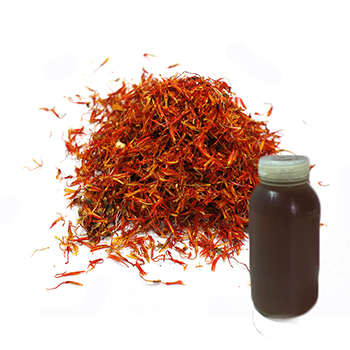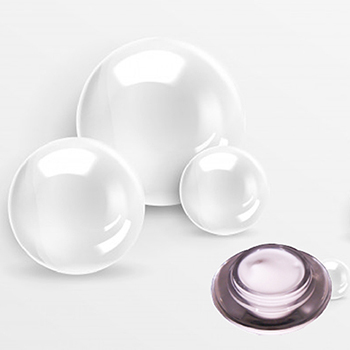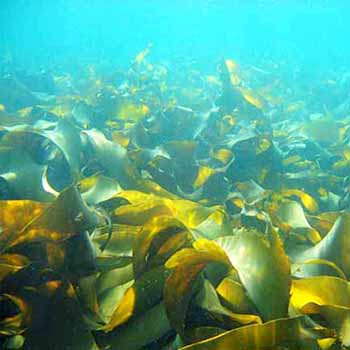目前購物車內沒有商品
The mucilage of yam (Dioscorea batatas Decne) tuber exhibited angiotensin converting enzyme inhibitory activities:
Abstract:
The tuber mucilage of yam (Dioscorea batatas Decne) (YTM) was extracted and purified to homogeneity, which was confirmed by the toluidine blue staining on a sodium dodecylsulfate-polyacrylamide gel electrophoresis gel treated with 2-mercaptoethanol appearing as a single band with molecular mass larger than 250 kDa. This purified YTM was shown by spectrophotometric method to inhibit angiotensin converting enzyme (ACE) in a dose-dependent manner (28.7 to 59.8% ACE inhibition, respectively, by 102.46 to 409.84 µg/mL YTM) using (N-(3-[2-furyl]acryloyl)-P he-Gly-Gly) (FAPGG) as a substrate. The concentration of YTM required for 50% inhibition (IC50) of ACE activity was 256.2 µg/mL while that of captopril was 0.00781 µM (0.0095 nmole). The commercial polysaccharide pectin (102.46 to 307.38 µg/mL) showed no inhibitory activity against ACE. Using fluorescent silica TLC or C18 reverse phase HPLC to detect FAPGG and FAP, the results also showed that YTM inhibited ACE. The YTM showed mixed type inhibition against ACE, and the Michaelis constant in the presence of YTM was 0.33 mM. Consumption of yam tubers may benefit people's health.
Introduction:
Several risk factors are associated with stroke, including age, gender, elevated cholesterol, smoking, alcohol, excessive weight, race, family history, and hypertension (Mark and Davis, 2000). Although some of these risk factors cannot be modified, one factor that can be controlled and has the greatest impact on the etiology of stroke is high blood pressure (Dunbabin, 1992). Hypertension is considered to be the central factor in stroke with approximately 33% of deaths due to stroke attributed to untreated high blood pressure (Mark and Davis, 2000). Several classes of pharmacological agents have been used in the treatment of hypertension (Mark and Davis, 2000). One class of anti-hypertensive drugs, known as angiotensin I converting enzyme (ACE) inhibitors (ACEI, i.e. a peptidase inhibitor), are associated with a low rate of adverse side-effects and are the preferred class of anti-hypertensive agents when treating patients with concurrent secondary diseases (Fotherby and Panayiotou, 1999). ACE (peptidyldipeptide hydrolyase EC 3.4.15.1) is a dipeptide-liberating exopeptidase classically associated with the renin-angiotensin system regulating peripheral blood pressure (Mullally et al., 1996). ACE removes a dipeptide from the C-terminus of angiotensin I to form angiotensin II, a very hypertensive compound. Several endogenous peptides, such as enkephalins, b-endorphin, and substance P, were reported to be competitive substrates and inhibitors of ACE (Mullally et al., 1996). Several food-derived peptides also inhibited ACE, including a-lactalbumin and b-lactoglobulin (Mullally et al., 1996), casein (Maruyama et al., 1987), zein (Yano et al., 1996), and gelatin (Chen et al., 1999; Kim et al., 2001). Several antioxidant peptides (reduced glutathione and carnosine-related peptides) (Hou et al., 2003) and synthetic peptides also exhibited ACEI activities (Chen et al., 2003).
Yam (Dioscorea species) is a member of the monocotyledonous family Dioscoreaceae and is a staple food in West Africa, Southeast Asia and the Caribbean (Akoruda, 1984). Yam is recognized as an herbal plant since dried tuber slices were frequently used as Chinese herbal medicines. The tuber storage proteins of yam, dioscorin, exhibited carbonic anhydrase and trypsin inhibitor activities (Hou et al., 1999a), both dehydroascorbate reductase and monodehydroascorbate reductase activities (Hou et al., 1999b), and antioxidant activities (Hou et al., 2001). Yam tuber contained mucilages reported to be a mannan-protein complex (Misaki et al., 1972; Tsai and Tsai, 1984). Recently, it was reported that yam tuber mucilage (YTM) exhibited antioxidant activities (Hou et al., 2002). In this work we report for the first time that purified YTM exhibits novel dose-dependent ACE inhibitory activities. Captopril was used as a positive control and commercial pectin as a negative control. The YTM showed mixed type inhibition against ACE, and the Michaelis constant in the presence of YTM was also determined.
Materials and Methods:
Materials
Tris, electrophoretic reagents, and silica gel 60 F254 were purchased from E. Merck Inc. (Darmstadt, Germany); captopril was purchased from Calbiochem Co. (CA, USA); Seeblue prestained markers for SDS-PAGE including myosin (250 kDa), BSA (98 kDa), glutamic dehydrogenase (64 kDa), alcohol dehydrogenase (50 kDa), carbonic anhydrase (36 kDa), myoglobin (30 kDa), and lysozyme (16 kDa) were from Invitrogen (Groningen, The Netherlands); FAPGG, ACE (I unit, rabbit lung), nonylamine, pectin (from citrus fruit, degree of esterification 94%), toluidine blue, coomassie brilliant blue R-250, and other chemicals and reagents were purchased from Sigma Chemical Co. (St. Louis, MO, USA).
Extraction and Purification of Mucilage from Yam Tuber:
Fresh yam (Dioscorea batatas Decne) tubers were purchased from a local wholesaler. After washing and peeling, the tubers were cut into strips for YTM extraction and purification according to the methods of Hou et al. (2002). One kg yam tuber was homogenized with 4 L of 50 mM Tris-HCl buffer (pH 8.3) containing 1% vitamin C. After centrifugation at 14,000 g for 30 min, the supernatants were saved, and isopropanol was added to a final concentration of 70%. This solution was stirred quickly and placed at 4ºC overnight. The precipitates were filtrated and dehydrated with 100% isopropanol and then washed with acetone. After drying in an oven at 40ºC, the crude YTM was ground and collected for further purification by both SDS and heating procedures. The 1.0 g crude YTM powder was dissolved in 200 mL deionized water and kept warm in water bath at 50ºC. The 40 mL of 5% SDS solution (dissolved in 45% ethanol) was added to crude YTM solution and kept at 50ºC with gentle stirring for 20 min and continuously stirred at room temperature for another 2 h. Then, this solution was placed on ice bath to lower the temperature to precipitate the SDS-protein complex. After centrifugation at 14,000 g at 0ºC for 30 min, the supernatants were saved, and the SDS-protein complex was precipitated by isopropanol as mentioned above. After drying in a 40ºC oven, the semipurified YTM was ground and dissolved, then heated in boiling water for 20 min. After centrifugation at 14,000 g at 0ºC for 30 min, the supernatants were saved and isopropanol was added to a final concentration of 70%. This purified YTM was filtrated, dehydrated, rinsed with acetone, dried, and then collected for further uses.
Protein and Proteoglycan Stainings on SDS-PAGE Gels:
Eighty µL samples were mixed with 20 µL sample buffer, namely 60 mM Tris-HCl buffer (pH 6.8) containing 2% SDS, 25% glycerol and 0.1% bromophenol blue with 2-mercaptoethanol, heated in boiling water for 5 min, cooled to ambient temperature, and subjected to electrophoresis according to the method of Laemmli (1970). This discontinuous gel system contained 2.5 cm, 4% stacking gel, and 4.5 cm, 15% separating gel. Coomassie brilliant blue R-250 was used for protein staining (Neuhoff et al., 1985). The 0.2% toluidine blue solution was used for proteoglycan staining (Carney, 1986).
Determination of ACE Inhibitory Activity of YTM by Spectrophotometry:
The ACE inhibitory activity was measured according to the method of Holmquist et al. (1979) with some modifications. The total 1.22 mL contained 20 µL (20 mU) of commercial ACE (1 U/mL, rabbit lung, Sigma Chem. Co.), 200 µL of different amounts of YTM (125, 250, 375 and 500 µg) or commercial pectin (degree of esterification, 94%, 125, 250 and 375 µg), and 1 mL, 0.5 mM N-(3-[2-furyl]acryloyl]-P he-Gly-Gly) [FAPGG, dissolved in 50 mM Tris-HCl buffer (pH 7.5) containing 0.3 M NaCl]. The decreased absorbance readings at 345 nm (DAinhibitor) were recorded over 5 min at room temperature. Deionized water was used instead of sample solution for blank reading (DAblank). The captopril (MW is 217.3) was used as a positive control for ACE inhibition (0.75, 1.89, 3.77, 5.66, 7.54, 18.8, and 75.4 nM). The ACE activity was expressed as DA 345 nm and the ACE inhibition (%) was calculated as followed: [1- (DAinhibitor ¸ DAcontrol)] ´ 100%. IC50 was defined as the concentration of samples required to inhibit 50% of ACE activity under these conditions.
Determination of ACE Inhibitory Activity of YTM by TLC:
The ACE inhibitory activity of YTM was determined by TLC method (Holmquist et al., 1979). The reactions of commercial ACE with purified YTM or commercial pectin were done according to the methods of Anzenbacherova et al. (2001) with some modifications. Each 100 µL sample (250 µg) was premixed with 15 mU ACE for one min and then 200 µL of 0.5 mM FAPGG was added and reacted at room temperature for 10 min. The 800 µL methanol was added to stop the reaction. In the blank experiment only FAPGG was used; in the control experiment, ACE reacted with FAPGG under the same conditions. Each reaction mixture was dried under reduced pressure, redissolved with 400 µL methanol and 50 µL of the solution were spotted on a silica gel 60 F254 by CAMAG Linomat IV spray-on technique (CAMAG, Switzerland). The FAPGG and FAP (product of an ACE-catalyzed hydrolysis reaction) were separated by TLC with a developing system of water saturated 1-butanol : acetic acid : water, 4:1:1 (V/V/V) and detected under UV light (Holmquist et al., 1979).
Determination of ACE Inhibitory Activity of YTM by HPLC:
Each 50 µL of purified YTM (250 µg) or commercial pectin (250 µg) were premixed with 15 mU ACE for one min and then 200 µL of 0.5 mM FAPGG was added and reacted at room temperature for 10 min according to the methods of Anzenbacherova et al. (2001). The 800 µL methanol was Lee et al. — Yam tuber mucilage exhibited ACE inhibitory activities
added to stop the reaction. In the blank experiment only FAPGG was used; in the control experiment, ACE reacted with FAPGG under the same conditions. Separation of FAPGG and FAP was carried out on the Shimadzu (Japan) chromatographic system at 40ºC (CTO-6A column oven) equipped with LC-10AS liquid chromatography and SIL-9A autoinjector with a 100 µL loop. The HPLC analysis was performed on a Lichrospher 100 RP-18 endcapped column (Merck, Darmstadt, Germany; 250 ´ 4.6 mm i.d.), with particle size 5 µm. The compounds were separated isocratically with a mobile phase consisting of a mixture of 0.02 M nonylamine (adjusted to pH 2.4 with phosphoric acid) : acetonitrile, 67.5:32.5 (V/V) (Anzenbacherova et al., 2001). The flow rate was 1 mL/min; the injection volume was 100 µL; the eluted fractions were detected at 345 nm.
Determination of the Kinetic Properties of ACE Inhibition by YTM:
The kinetic properties of ACE (20 mU) without or with purified YTM (250 µg) in total volume of 1.22 mL were determined using different concentrations of FAPGG as substrates (0.1 mM to 0.5 mM). The Km (without YTM) and Km´ (with YTM) were calculated from Lineweaver-Burk plots, where Km´ was the Michaelis constant in the presence of 204.92 µg/mL YTM.
Results and Discussion
Extraction and Purification of YTM:

Figure 1. The effects of purified YTM, pectin, and captopril on ACE activity determined by spectrophotometry. (A) Purified YTM (102.46, 204.92, 307.38, and 409.84 µg/mL) or commercial pectin (102.46, 204.92, and 307.38 µg/mL); (B) Captopril (0.75, 1.89, 3.77, 5.66, 7.54, 18.8, and 75.4 nM). The inhibition of ACE (%) was calculated according to the equation [1- (DAinhibitor ¸ DAcontrol ) ] ´ 100%.

Figure2. The HPLC chromatograms of Lichrospher 100 RP-18 endcapped column for the effects of yam tuber mucilage or commercial pectin on ACE inhibitory activity. (A) blank test (FAPGG only with a retention time of 7.16 min); (B) control test (ACE reacted with FAPGG to produce FAP which had a retention time of 13.57 min); (C) 250 µg commercial pectin; (D) 250 µg yam tuber mucilage against 15 mU ACE. The mobile phase consisted of a mixture of 0.02 M nonylamine (adjusted to pH 2.4 with phosphoric acid) : acetonitrile, 67.5:32.5 (V/V). The flow rate was 1 mL/min; the injection volume was 100 µL; and the eluted fractions were detected at 345 nm.

Figure 3. The Lineweaver-Burk plots of ACE (20 mU) without or with purified yam tuber mucilage (204.92 µg/mL) in different concentrations of FAPGG (0.1 to 0.5 mM).fied YTM did have inhibitory activity against ACE. By using different methods, including spectrophotometry, TLC and HPLC for the determination of ACE assay, it was confirmed that purified YTM exhibited ACE inhibitory activity.
Determinations of the Kinetic Properties of ACE Inhibition by YTM:
The Lineweaver-Burk plots of ACE (20 mU) without or with purified YTM (204.92 µg/mL) in different concentrations of FAPGG are shown in Figure 3. The results indicated that purified YTM acted as a mixed type inhibitor with respect to the substrate (FAPGG). Without the purified YTM, the calculated Km was 0.255 mM FAPGG for ACE, which was close to the result (0.3 mM) of Holmquist et al. (1979). In the presence of purified YTM (204.92 µg/mL), the calculated Km´ was 0.3304 mM.
In conclusion, the YTM exhibited dose-dependent ACE inhibitory activity and acted as a mixed type inhibitor with respect to the substrate (FAPGG). The IC50 of YTM in inhibiting ACE activity was 256.2 µg/mL, less than several peptides acting as ACE inhibitors. It might be beneficial to health when people consume yam.




